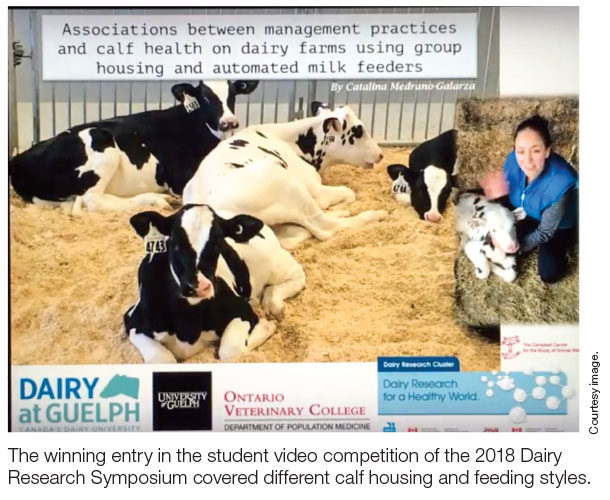The benefits of group housing calves stem from the social aspect of learning and freedom of movement. It provides calves more space to move around. Even giving a calf one pen-mate has been shown to improve their social development, solid feed intake and weight gain.
A low-cost, simple solution is to group two hutches together surrounded by a fence. This allows two calves to socialize and learn from each other. It also prepares them for their future and social life as a member of the herd.
The other option is to group house calves with automated milk feeders. This facilitates more milk consumption and the ability of calves to feed when hungry. The other benefit is gradual weaning, which can be programmed to step down calves’ milk for a more gradual transition.
Researchers from the University of Guelph surveyed 670 dairy farmers across Canada, finding that 16 percent of farmers were using automated milk feeding. The remaining 84 percent of farmers used manual milk feeding.
Those using automated milk feeders all kept calves in groups, whereas 24 percent of manually fed calves were in groups.
Calves using automated feeders began their social life at 5 days old, whereas manually fed calves began group life at 60 days.
Farmers that switched to automated calf feeders wanted to:
- Raise better calves
- Feed more milk to calves
- Reduce labour
- Improve their working conditions
Farmers that stayed with manual feeding methods were concerned about:
- Investment costs of new equipment
- Investment costs of new facilities
- Small farm size (economy of scale)
Not all calves will learn the same. It is important to consider individual differences and stall design.
The differences between calves less than 1 day old versus 5 days old:
- 5-day-old calves learned in roughly half the time (31 versus 65 hours).
- But took 3.6 times more labour (more than 2 hours versus 40 minutes).
- Disease risk was the same.
The difference between feeders with steel bars compared with solid plastic walls:
- Calves approached the teat twice as fast and began to feed on their own twice as fast with solid plastic walls.
The researchers also noted that only a subset of calves were scored as moderately difficult to train for their first time onto the feeder.
For more information
Workshop presentation: Benchmarking dairy cattle comfort and new practices for better calf care at Canadian Dairy Research by Doris Pellerin and Marianne Villetaz-Robichaud, Université Laval; Elsa Vasseur, McGill University; and Derek Haley, University of Guelph
Video: Student video competition, winning entry, 2018 Dairy Research Symposium, by Catalina Medrano-Galarza, University of Guelph, titled, “Associations between management practices and calf health on dairy farms using group housing and automated milk feeders” on YouTube. ![]()
PHOTO: The winning entry in the student video competition of the 2018 Dairy Research Symposium covered different calf housing and feeding styles. Courtesy image.
Dairy Farmers of Canada (DFC) is the national policy, lobbying and promotional organization representing Canada’s farmers. DFC works to support sustainable dairy production; facilitate solutions to provincial/national challenges; provide credible research of dairy products on a national basis; and create innovative ways to grow the market.









